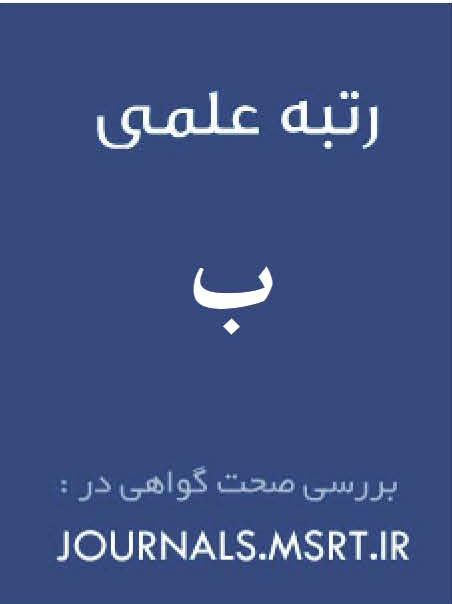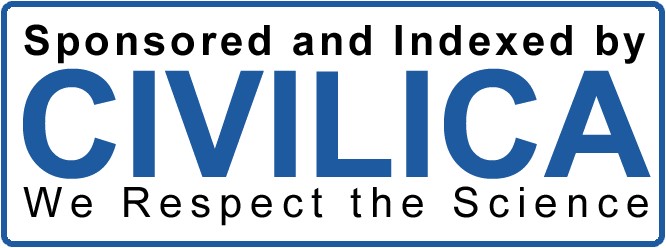مدلیابی خردمندی بر اساس تواناییهای شناختی و جو خانواده، با میانجیگری تنظیم هیجانات در دانشجویان
Keywords:
Wisdom, Cognitive Abilities, Family Atmosphere, Emotion Regulation, StudentsAbstract
Downloads
References
Arbel, R., Perrone, L., & Margolin, G. (2016). Adolescents’ Daily Worries and Risky Behaviors: The Buffering Role of Support Seeking. Journal of Clinical Child & Adolescent Psychology, 47(6), 900-911. https://doi.org/10.1080/15374416.2016.1169536
Auerbach, R. P., Tsai, B., & Abela, J. R. Z. (2010). Temporal Relationships Among Depressive Symptoms, Risky Behavior Engagement, Perceived Control, and Gender in a Sample of Adolescents. Journal of Research on Adolescence, 20(3), 726-747. https://doi.org/10.1111/j.1532-7795.2010.00657.x
Goueta, N., Gershy, N., & Pollak, Y. (2025). Reciprocal Relations Between ADHD and Risky Behavior in Adolescence: A Between and Within‐person Longitudinal Analysis. Journal of Child Psychology and Psychiatry. https://doi.org/10.1111/jcpp.14128
Hasikić, A., & Vlah, N. (2017). The Relationship Between the Experience of Resistance Within the Family and Self-Perceived Risky Behaviors Among High School Students. Zbornik Radova 18(15), 63-80. https://doi.org/10.51728/issn.2637-1480.2019.15.63
Heriansyah, M. (2018). The Contribution of Group Guidance Services on the Students Risky Behavior Prevention Program. Jurnal Pipsi (Jurnal Pendidikan Ips Indonesia), 3(1), 4. https://doi.org/10.26737/jpipsi.v3i1.535
Hu, D., Liu, X., Xiao, H., & Zhang, W. (2021). Jogging-Related Risk Cognition and the Stimulation of Risky Behavior During Jogging. American Journal of Health Behavior, 45(2), 256-267. https://doi.org/10.5993/ajhb.45.2.6
Lesmana, M. H. S., & Chung, M. H. (2024). Mediating Roles of Perceived Stigma and Mental Health Literacy in the Relationship Between School Climate and Help-Seeking Behavior in Indonesian Adolescents. PLoS One, 19(5), e0298017. https://doi.org/10.1371/journal.pone.0298017
Pratiwi, R., & Mudjiran, M. (2020). The Contribution of Self-Regulation and YouTube Users to Risky Sexual Behavior for Boarding House Students. Journal of Counseling and Educational Technology, 3(1). https://doi.org/10.32698/01021
Ray, J. M., Kats-Kariyanakatte, P., Moore, L., & Jacquin, K. M. (2022a). Risky Behavior in Adults Related to Gender, Age, and Children at Home. https://doi.org/10.36315/2022padviii09
Ray, J. M., Kats-Kariyanakatte, P., Moore, L. R., & Jacquin, K. M. (2022b). Gender, Age, and Children at Home Influence Risky Behavior in Adults. https://doi.org/10.36315/2022inpact067
Recto, P., & Champion, J. D. (2016). Psychological Distress and Associated Factors Among Mexican American Adolescent Females. Hispanic Health Care International, 14(4), 170-176. https://doi.org/10.1177/1540415316676224
Samadypoor, R., & Tamini, B. K. (2016). The Role of Personality Pattern Behaviors in Risk Behaviors of High School Students. International Journal High Risk Behaviors & Addiction, 5(4). https://doi.org/10.5812/ijhrba.36313
Shi, X. Y., Pan, J., & Li, M. (2024). Assessing the Role of Mental Health Literacy in Shaping Adolescent Health Attitudes and Its Association With Obesity in China. American Journal of Health Behavior, 48(6), 1663-1674. https://doi.org/10.5993/ajhb.48.6.17
Waliyanti, E., Dewantari, R. A., Puspita, D., & Primastuti, H. I. (2023). Sexual Behavior of Adolescents: Risk Factors in Rural Areas. Media Kesehatan Masyarakat Indonesia, 19(2), 61-72. https://doi.org/10.30597/mkmi.v19i2.21663
Wang, X., Wang, S., Song, T., Feng, K., & Li, Y. (2024). Intergenerational Transmission of Mental Health Literacy and Its Mechanism: The Mediating Effect of Parent-Child Relationship and the Moderating Effect of School Mental Health Service. Psychology research and behavior management, Volume 17, 1177-1189. https://doi.org/10.2147/prbm.s453122
Weiss, N. H., Sullivan, T. P., & Tull, M. T. (2015). Explicating the Role of Emotion Dysregulation in Risky Behaviors: A Review and Synthesis of the Literature With Directions for Future Research and Clinical Practice. Current opinion in psychology, 3, 22-29. https://doi.org/10.1016/j.copsyc.2015.01.013
Weiss, N. H., Tull, M. T., Dixon‐Gordon, K. L., & Gratz, K. L. (2016). Assessing the Negative and Positive Emotion-Dependent Nature of Risky Behaviors Among Substance Dependent Patients. Assessment, 25(6), 702-715. https://doi.org/10.1177/1073191116665906
Xu, J., Lv, j., Zeng, H., Wu, L., & Cheng, F. (2023). Smoking, Drinking, Sleeping and Risky Sexual Behaviors: A Cross Sectional Study in China (Preprint). https://doi.org/10.2196/preprints.51189
Yani, A. (2024). Enhancing Adolescent Mental Health Literacy: Strategies for Stigma Reduction and Help-Seeking Behavior. JRKPK, 3(2), 78-86. https://doi.org/10.61194/jrkpk.v3i2.668
Zakrajsek, J. S., Molnar, L. J., Eby, D. W., Kostyniuk, L. P., Zanier, N., LeBlanc, D. J., & Sayer, T. (2022). Guidelines for Developing Evidence-Based Risky Driving Countermeasures That Include Older Drivers. Innovation in Aging, 6(Supplement_1), 164-164. https://doi.org/10.1093/geroni/igac059.655
Downloads
Published
Submitted
Revised
Accepted
Issue
Section
License
Copyright (c) 2025 نازنین کریم زاده سورشجانی, رضا احمدی, محمد قاسمی پیر بلوطی (نویسنده)

This work is licensed under a Creative Commons Attribution-NonCommercial 4.0 International License.






